Shelter is a key element of life on earth. Humans construct homes, birds weave nests, insects make cocoons, animals develop skin, sea creatures and nuts grow shells for protection. These casings remain after their inhabitants have gone, providing a rich source of material for re-use. They provide materials for many craft practices as well as artistic use through sculpture and jewellery.
Second home also evokes the process of re-locating to another land, when cultures can be re-imagined in another context.
Lola Greeno | Tessa Miller | Lambert Ho | Solomon Islands | Martina Dempf | Blandine Hallé | James Tylor | Andrew Gall | Natalie Thomas | Vivien Bedwell | Andy Lowrie | Annelize Mulder | Bozena Wojtaszek | Jesika Dawnn | Trudy Golley and Paul Leathers | Tania Cruz
Reflection from Camila Marambio
A Chilean curator was invited to reflect on the meaning of “second home”.
As I roam the street of Brunswick I feel more like a hound than a human. Driven by need, want and pretense I hunt for a second home. My animal nature leads me to quiet streets, away from the noisy arteries, where I am all eyes, all ears, all nose, all heart, all skin. Relentlessly desirous, I scan the shapes, colors, sizes, configurations, and front gardens of house after house. Exercising quick judgment, yet postponing the actual jotting down of numbers and street names, what remains after each long drift is a hunger for the kill. I long to encounter a shell so beautiful, so uniquely formed, that it suits just me. But I know that this naïve conceit to find a house that is “meant to be” only feeds my appetite for fantasy and that soon enough I will have to surrender to the fact that in every case I will have to come to terms with a living space conceived and built for an other… more.
Second Home was developed to complement the exhibition Cultural Jewels at the JamFactory.
Lola Greeno
- Lola Greeno, tunne necklace (detail), 2012, mussel shells, gumnuts, ochre, wire, diameter 345 mm, photo by John Leeming QVMAG
- Lola Greeno, teunne (king maireener shell crown) [detail] 2013, king maireener shells, cotton thread, diameter 250mm, photo by John Leeming QVMAG
- Lola Greeno, carner necklace (reverse detail) 2012, abalone shells, echidna quills, wire, diameter 400mm, photo by John Leeming QVMAG
- Lola Greeno, teerunna necklace. 2012, kangaroo vertebrae, ochre, wire, diameter 215mm, photo by John Leeming QVMAG
- Lola Greeno, tunne necklace, 2012, mussel shells, gumnuts, ochre, wire, diameter 345 mm, photo by John Leeming QVMAG
- Lola Greeno, menna necklace, 2013, echidna quills, wire, diameter 350mm, photo by John Leeming QVMAG
Tessa Miller
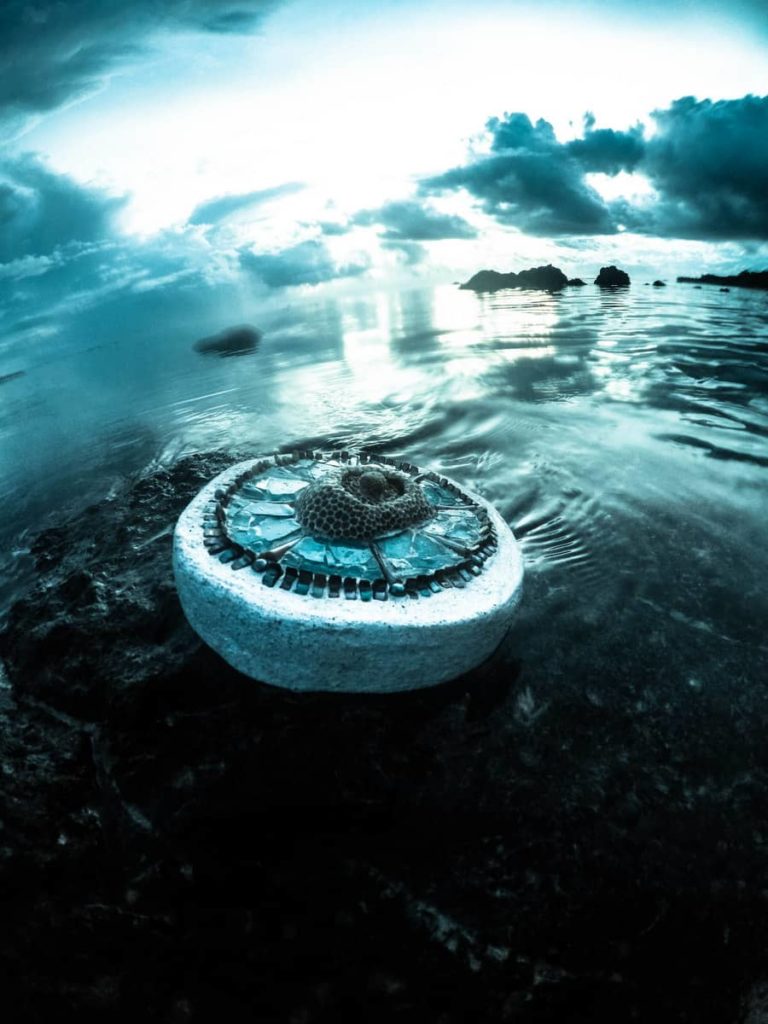
Tessa Miller, Sea gem series, 2016, reconstituted sandstone, windscreen glass, coral, shell, pearls, 190 x 200 x 50 mm, photo by Craig Workman
“This used to be my home, now you may build yours upon my bones”
The Sea Gems series, I created (and still create) as a means to cope with live-rock harvest along the Coral Coast where I live. Live-rock harvest had been practiced for some 30 years when I first moved to the coast, and it would kill a part of me to see this happen every other day so I set out on a mission to try to stop this. To cut a long story short, it took over six long years of talks, tears, obsessing, silence, creating and just allowing things to happen, and enjoying the process before the activity finally did stop. In 2014, I managed to have an area smack in the middle of the harvest zone declared a marine protected area, and just last year all harvest ceased entirely. Sea Gems were/are instrumental in achieving this; they allowed me to see beauty and opportunity in catastrophe..and damn, they were powerful. Peacefully powerful! I have exhibited works in multimedia in Fiji for over ten years. But art for me now has a higher place. And I create to explore and experience peace and to inspire and discover solutions. Sea Gems has taught me that. This concept creates so much space in a crowded world, I am in love with it!
Second Home also coincided with the Cyclone Winston in Fiji. the strongest storm ever recorded in the southern hemisphere. Thousands of residents of Fiji’s outer islands are now homeless and face the challenge of re-building their lives.
If you’d like to help, please donate to the Red Cross:
Bank Name: ANZ Banking Group Ltd.
Account Name : Fiji Red Cross Society
Account Number: 1313354 BSB: 010890 (applicable for international deposits)
SWIFT CODE: ANZBFJFX (applicable for international deposits)
Please State in Narrative: TC Winston Fiji Red Cross Appeal and your name.
Lambert Ho
- Lambert Ho, installation for the masses in Pagopago, shredded and twisted white ‘masi’ with shells, dried gourd husk and mop shells, made in Fiji
- Lambert Ho ‘koula ni wasawasa’ Golden Mother of Pearl (MOP) shell, local qiridamu seeds, black wood beads and fijian grass seeds, made in Fiji
- Lambert Ho, ‘Adie Kelera’ Fijian grass seeds, black wood beads and glass crystal pieces, made in Fiji
The gold mother of pearl, was a gift from a friend, I believe they are more rare than the normal ones. It was sold to someone here in Fiji. The works were made for an exhibition in American Samoa. Photos are courtesy of Jason Chute and Irie Adi.
solomon islands
- Mary Alois
- Margaret Deli
- Margaret Deli
- Mary Alois
- Noela Ani
- Noela Ani
- Noela Ani
These are modern designs Langa Langa Lagoon and Malaita Province, Solomon Islands, using shells typically used for Shell Money. Shell money is still being used in the Solomon Islands for Bride Price and for conflict resolutions. The red shells are the ones that have value. The deep sea shells are still prepared in the traditional way with traditional tools. It would be nice if the women were taught how to use modern tools (to save time and energy) and to use modern material to thread the shells so the necklaces could last longer. At the moment most of the necklaces are threaded together with rafia which disintergrates after a short while.
Alisa Vavataga.
Martine Dempf
- Martina Dempf, Collier “Cocoon + Crystal”, 2006, cocoon of mulberry silkworm, mountain crystal, gold, 3 x 4 x 50 cm
- Martina Dempf, Temporary home, ring, 2009, silver, cocoon cast, silver mounted, 4 x 3.5 x 1.7 cm
- w
- Martina Dempf, Time house, ring, 2009, drift wood, silver, wood carved, silver mounted, 11 x 3 x 2 cm
- Martina Dempf, Riding, brooch, 2010, coral, silver, cocoon cast, silver mounted, 5 x 4 x 2 cm
- Martina Dempf, Cocooning II, necklace, 2014, silver, Tussah silkworm, Antheraea Mylitta, cocoons, cast and mounted silver, 4 x 6 x 60 cm
- Martina Dempf, Cocooning I, necklace, 2014, silver, Tussah silkworm, Antheraea Mylitta, cocoons, cast and mounted silver, 4 x 6 x 60 cm
Cocooning expresses our utmost wish for a safe home. This basic need is denied to a currently increasing number of people seeking refuge. The cocoons of caterpillars or the holes in driftwood once hosting insects are a meta-narrative for a deep desire of shelter and also for the transitional character of life. Also human beings are transformed by age and by fate. Being in transition is the lifeline of nature. A tree ends up as a piece of wood or even as fire and smoke. A cocoon hosts the silkworm until it leaves his temporary home as a butterfly, or it is sacrificed for its silk. The objects I have created reflect this never-ending process. By means of their technical transformation, they get located between nature and culture, between an art object and jewellery, depending in which way we look at them or use them.
Blandine Hallé
- Blandine Halle, the Native, 2016, necklace, 330 x 60 x 18 mm, photo by Blandine Hallé, made in Fremantle, Western Australia
- The Native, necklace – DETAIL, Upcycled Marri wood, sterling silver, linen thread, 330 x 60 x 18 mm, photo by Blandine Hallé, made in Fremantle, Western Australia
- Blandine Halle, The Native, 2016 earrings, Upcycled Marri wood, sterling silver, 62 x 21 x 8 mm, photo by Blandine Hallé, made in Fremantle, Western Australia
- Blandine Hallé, The Migrant, necklace, Upcycled Baltic pine, copper, linen thread, 440 x 70 x 10 mm, photo by Blandine Hallé, made in Fremantle, Western Australia
- Blandine Halle, The Migrant, necklace – DETAIL, Upcycled Baltic pine, copper, linen thread, 440 x 70 x 10 mm, photo by Blandine Hallé, made in Fremantle, Western Australia
In a post-modern point of view a nomad is a person who can be described in neither space nor time, by contrast with a person living a sedentary existence who can be defined in space and time (1). For the last thirty years, I have lived a nomadic lifestyle where I have had two homes, if not physically, at least in my heart and mind – one in my country of origin, France, and one abroad. As a young adult, I was considering France as my primary home, and the second one would be in the other location where I would go and live for some time – a foreign country, another continent. As life went on, the experience reversed to the opposite. Having lived most of the last 18 years in Australia, I progressively identified this continent as being my primary home, and France became the second one. For many years I was torn with the idea that at some point I would have to choose between one and the other, as if migrating to a new place as an adult you could completely erase the culture and language of the country you came from. Today I have accepted with great relief that I don’t have to choose, I can have one home and a second one. I can be Australian and French.
As an artist, I enjoy this nomadic lifestyle according to the seasons and times of the year. From place to place I hunt for inspiration and potential clients, I gather materials and images. I collect seeds and pods, discarded materials, found objects and photographs that I repurpose and upcycle into visual and/or wearable art.
The second home is always the one where I am not, the empty one, the one in my dreams, that is waiting for me to comfortably move in, with the same pleasure and sense of relief that one feels putting on an old familiar jacket.
James Tylor
- James Tylor, 2015, Aotearoa my Hawaiki #2,Inkjet print on hahnemuhle paper with rip,50x25cm
- James Tylor, 2015, Aotearoa my Hawaiki #3,Inkjet print on hahnemuhle paper with rip,50x25cm
- James Tylor, 2015, Aotearoa my Hawaiki #4, Inkjet print on hahnemuhle paper with rip, 50x25cm
- James Tylor, 2015, Aotearoa my Hawaiki #5, Inkjet print on hahnemuhle paper with rip, 50x25cm
Aotearoa, my Hawaiki explores the Polynesian Māori concept of Hawaiki. Hawaiki is the ancestral homeland and/or island where Māori people came from before migrating to Aotearoa (New Zealand). For New Zealand Māori people the actually physical place of Hawaiki is ‘Avaiki Nui (The Cook Islands). As an Australian of Maori descent I have always had an ideological connection to Aotearoa because it is the place where my Māori ancestors came from before migrating to Australia, So for myself a Maori Australian my Hawaiki or ancestral homelands is Aotearoa.Growing up in Australia I always held a connection to the ideological meaning of Aotearoa “land of the long white cloud”. As a child this meaning made me imagine a place where the mountains touched the clouds. This was a very different place to my home where I grew up in Australia that is mostly flat and with clear blue sky. This series represents my ideological connection to Aotearoa through my New Zealand Māori ancestry; Although It also highlights my disconnection from the physical place or landscape of New Zealand due to not having grown up in New Zealand because my Maori family migrated to Australia so many generations ago.
Andrew Gall
The Tears of the Forest pendants were created in the hope of bringing an awareness to people of the devastation that is happing to the forests of the world and in particular to those in my country lutruwita (Tasmania). By inserting the Myrtle into the precious metal, silver I have hoped to give some sort of physical association to the preciousness of our forests.
Andrew Gall is a pakana (Aboriginal man) from lutruwita (Tasmania), creating under his spirit guide name, kurina. A defining feature of Andrew’s work is the intricate nature in which he does his fine dot work in his paintings, and the delicate pieces he creates from fine metals like sterling silver, gold and copper. Andrew tells stories with every piece he creates from his personal and spiritual past, as well as that of his land and culture.
Natalie Thomas

Natalie Thomas, Puppy3, shells, plaster, adhesive and wool, 34 x 41cm x 21cm, photo by Claire Rae, made in Australia
I collect shells discarded by little creatures and I make them look like fur on little dogs.
Website: nattysolo.com
Vivien Bedwell
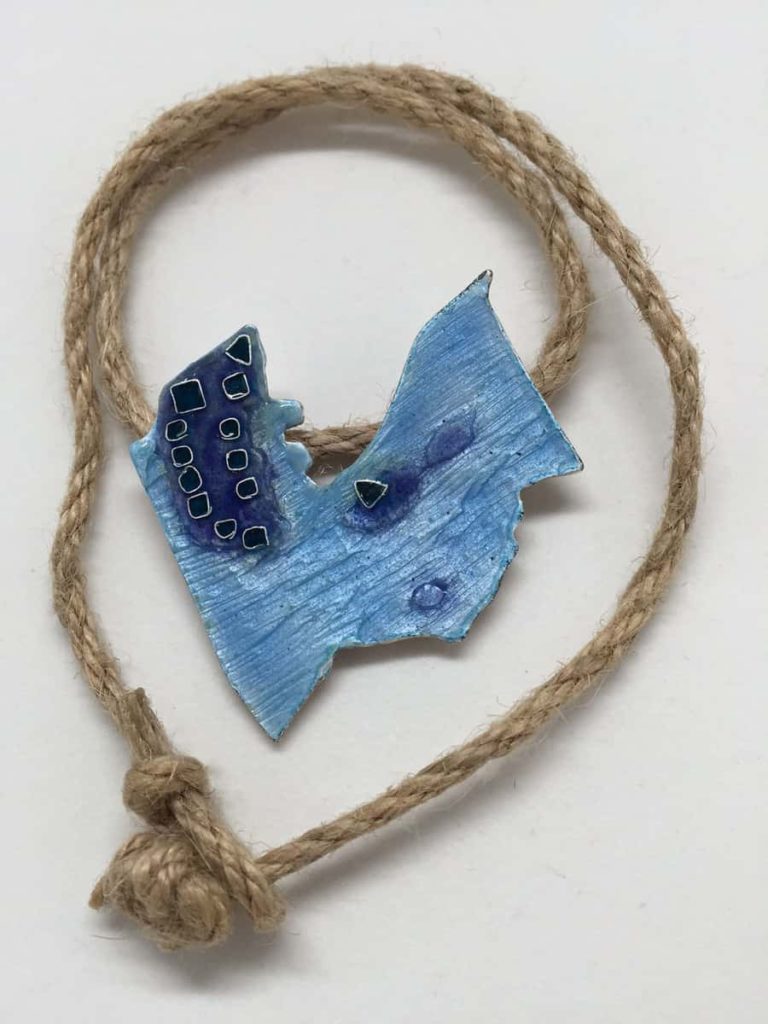
Vivien Bedwell, Merrimac from the Ocean over Land series, 2016, Sterling silver, vitreous enamel, 45cm hemp chord, Pendant 4.5 x 5cm, photo by Vivien Bedwell, made in Brisbane/Gold Coast
I’m interested in investigating human experiences concerning my surrounding environment. This pendant is from a series that has explored the direct impact and future effects of climate change and rising sea levels on my home city.
Andy Lowrie
- Andy Lowrie, Carnal house, 2016, blackened copper, microcrystalline wax, 4 pieces approximately 5 x 5 x 7cm, photo by Michelle Bowden, made in Brisbane, Australia
- Andy Lowrie, Together token (green), 2016, blackened copper, enamel paint, silver, silk cord, microcrystalline wax, Chain 50cm, pendant 7 x 7 x 2cm, photo by Michelle Bowden, made in Brisbane, Australia
Using borrowed decorative motif, these objects reinterpret a utilitarian, domestic object as a memorial housing and invoke elements of memory and mourning in the Australian suburban landscape.
My partner is a Northern American Biologist; he explained to me that lichens are the result of two separate organisms coexisting, when we encountered a particularly large, bushy one in Queensland. I made this work, and others, much later and called them Together Tokens.
Website: www.andylowrie.com
Annelize Mulder
- Annelize Mulder, 15 Rooms (installation view), cardboard wine boxes, 10.8 x 13.5 x 15.5 cm each, Faun Photography, made in Brisbane, Australia
- Annelize Mulder, 15 Rooms (one room), cardboard wine boxes, 10.8 x 13.5 x 15.5 cm each, Faun Photography, made in Brisbane, Australia
Current themes in my art practice investigate the psychological space of the migrant. Closely relating to personal experience, I contextualize the dichotomy between nostalgia and displacement. Constantly living in the in-between space of a new life and a life once lived. An obsessive re-creation of a childhood room allowed the exploration of memory and the significance of a former dwelling space. Set in a politically turbulent time in my birth country South Africa, the space signifies a sanctuary amidst the chaos. The psychological push and pull between the real, the imaginary and the longing for the familiar rings true for anyone trying to make life in a new country. Constant themes of home and belonging surface in my art. The small rooms that are no bigger than 15 cm each are detached, yet safe cocoons of safety and solace.
See the installation view with sound here.
Bozena Wojtaszek

Jesika Dawnn
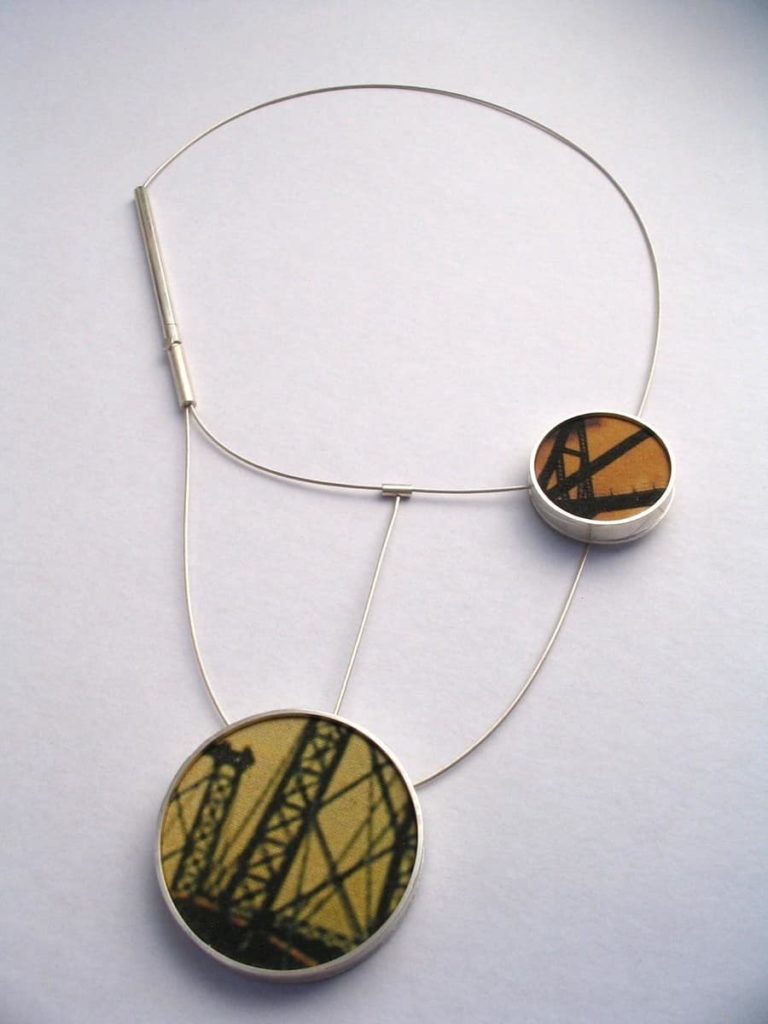
From Brooklyn to Brisbane, 2006, Sterling silver, photo transfer on calico fabric, 230 x 120 x 8mm, photo by Jesika Dawnn (formerly Hanford), made in Brisbane
Looking for the familiar as I move between the two, yet again.
Website: www.jesikajack.com
Trudy Golley and Paul Leathers
- Trudy Golley and Paul Leathers, (Rusty) Reliquary, ceramic wall piece with removable metal brooch, multi-fired ceramic, rust finish, with Sterling silver, 24Kt. gilt copper and anodised niobium, 29 x 17 x 8cm, photo by Paul Leathers, made in Nelson, British Columbia, Canada
- Trudy Golley and Paul Leathers, (Rusty) Reliquary, ceramic wall piece with removable metal brooch, multi-fired ceramic, rust finish, with Sterling silver, 24Kt. gilt copper and anodised niobium, 29 x 17 x 8cm, photo by Paul Leathers, made in Nelson, British Columbia, Canada
A collaboration between Canadian ceramic artist Trudy Golley and studio metalsmith Paul Leathers created for their wedding reception/exhibition entitled Rub(icon), this wall piece explores notions of function and features a removable brooch. At the end of an evening out, the wearer is invited to return the ornament to its home. Together again, the two craft objects — container and contained — transform into a single wall-mounted artwork.
Website: www.alluvium.ca
Tania Cruz
Lee Chan Min
And finally, not everyone is able to find a second home, even though they lost their first one. Follow this Korean ceramicist as he attempts to claim a home in the public spaces of Seoul.


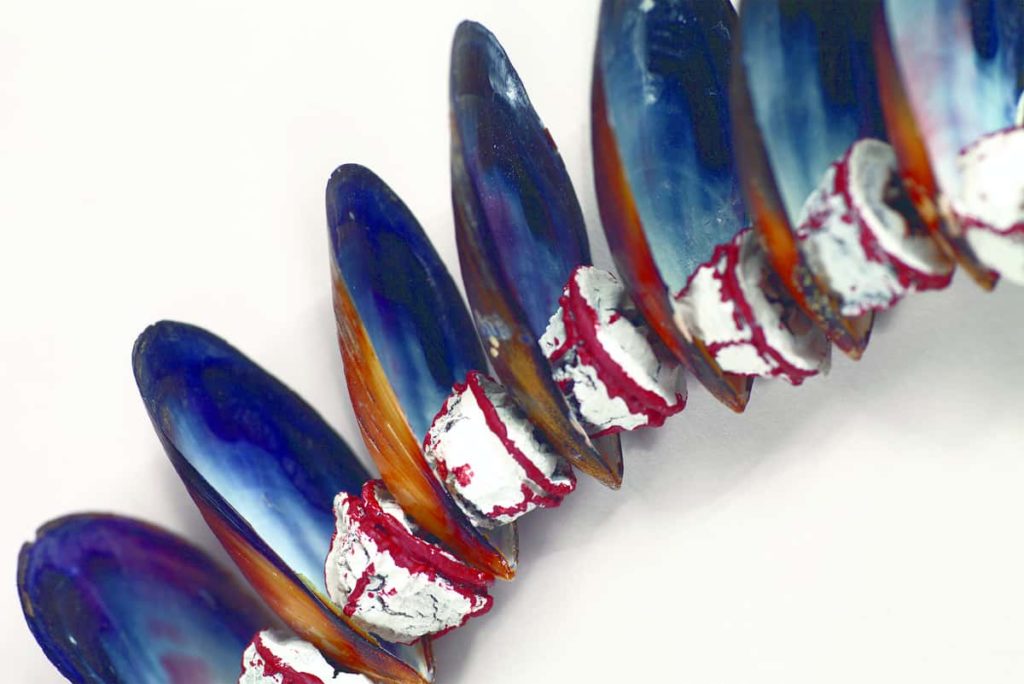

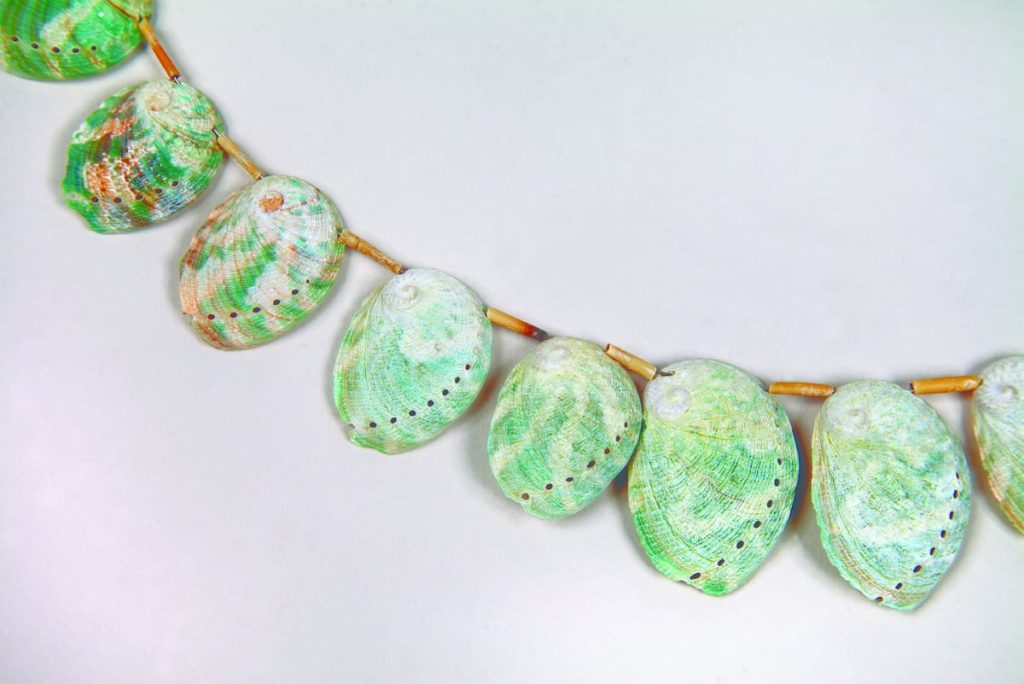
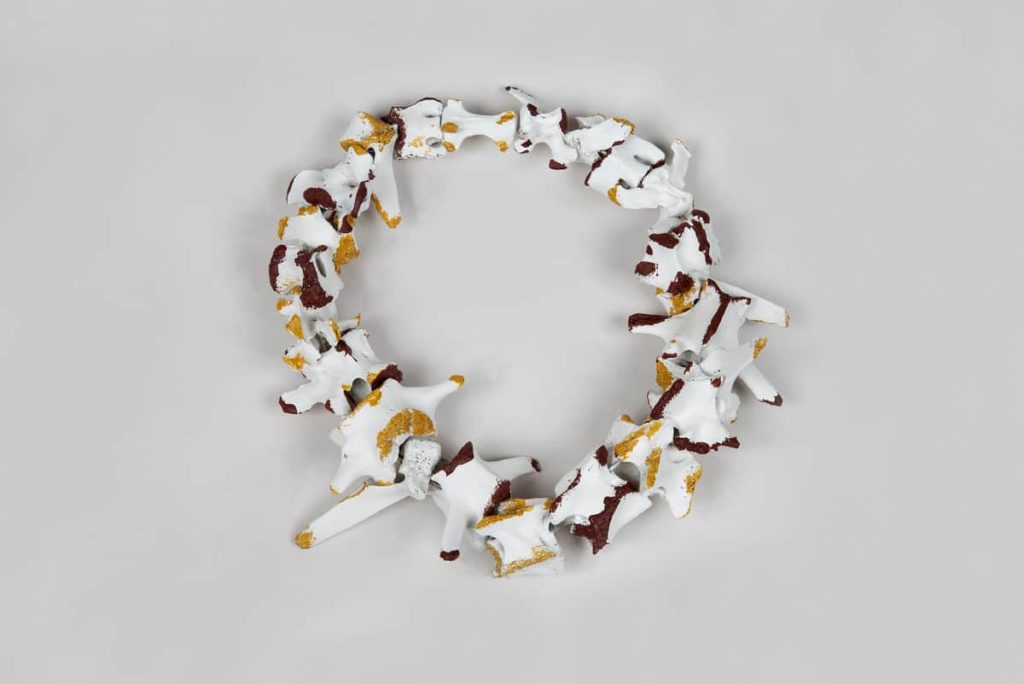
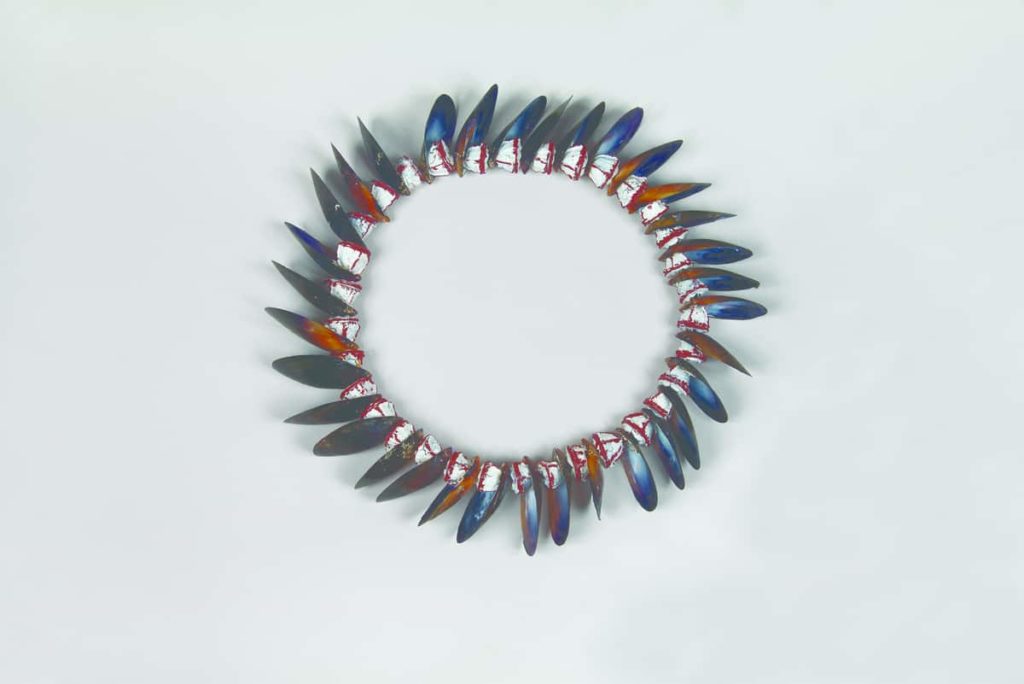
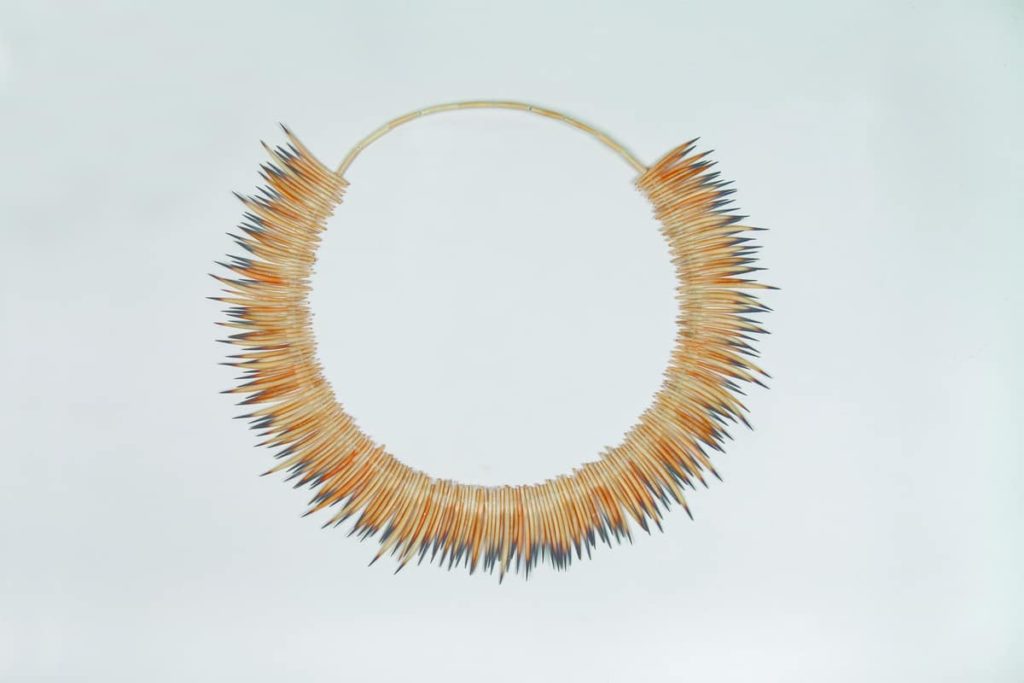

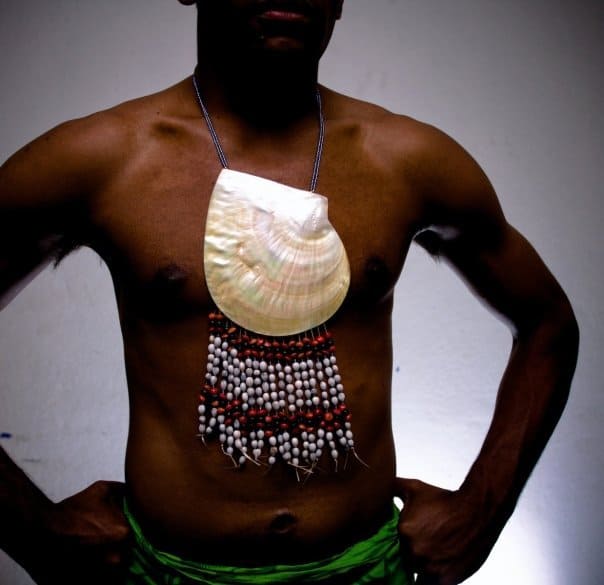
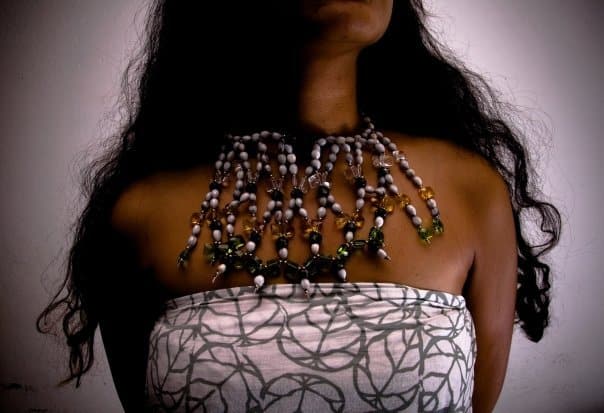
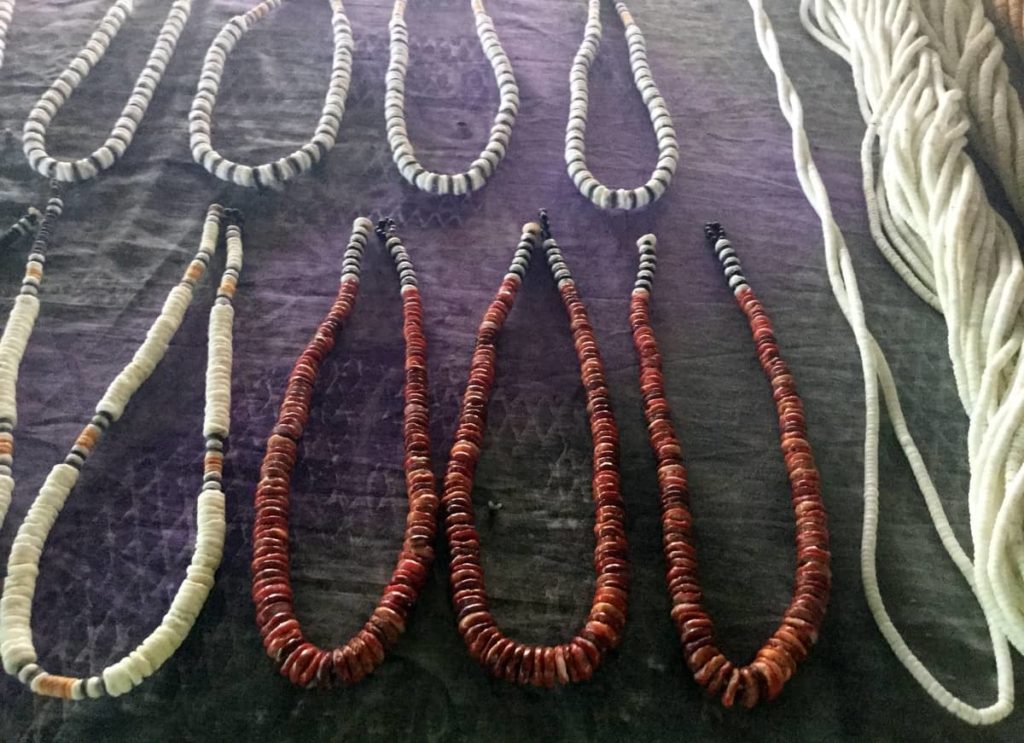
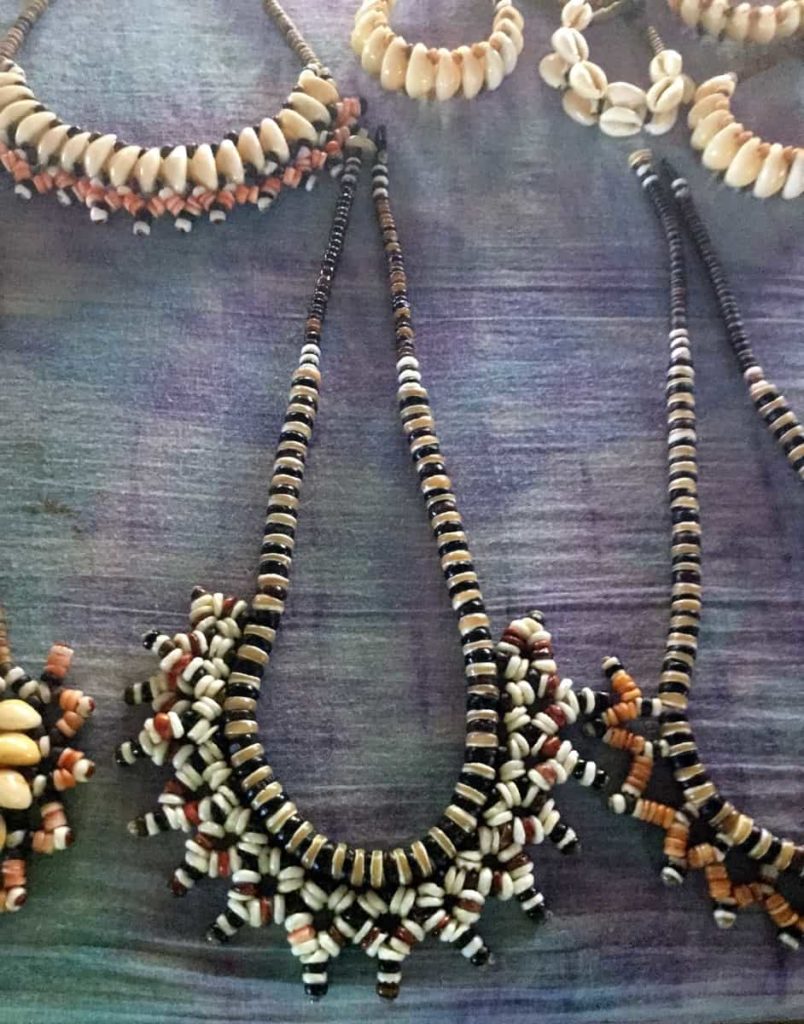

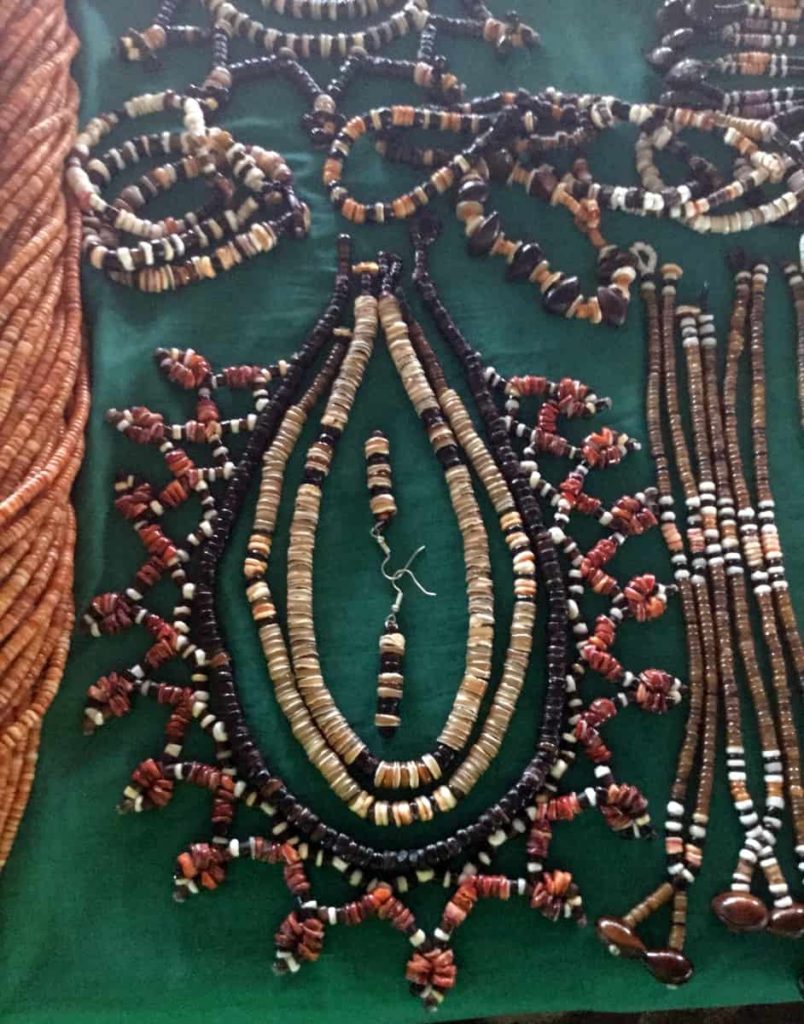

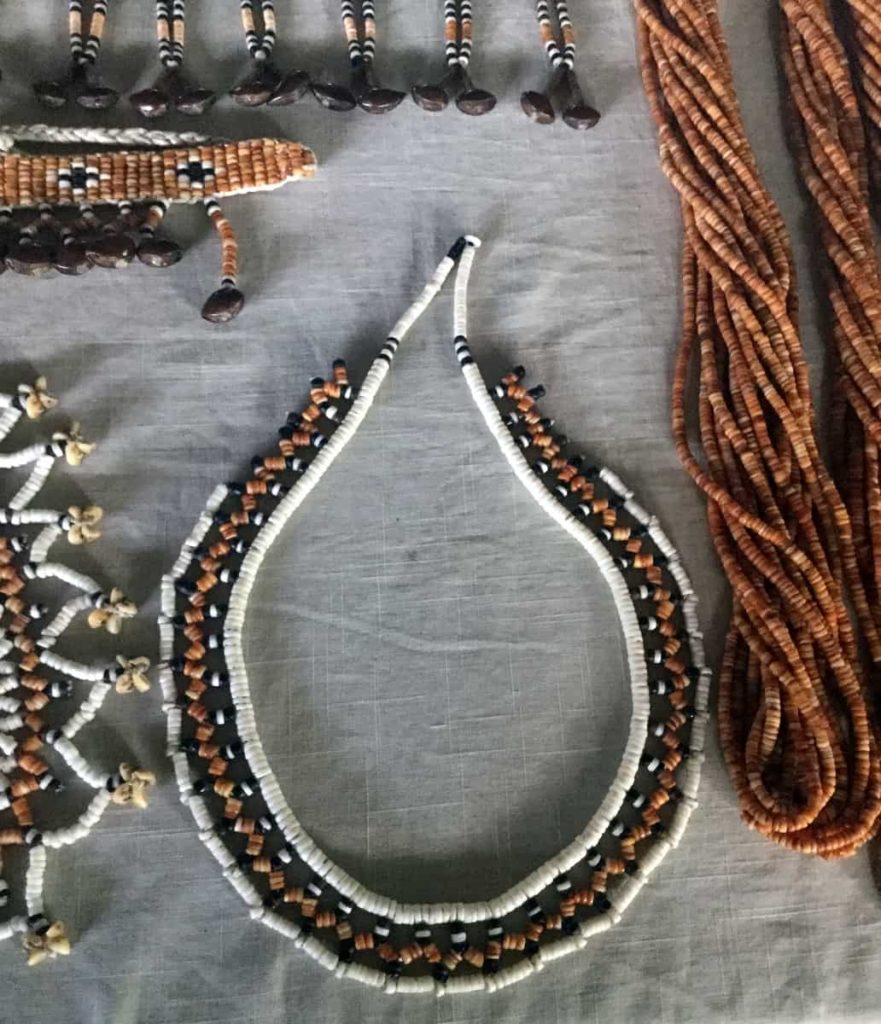
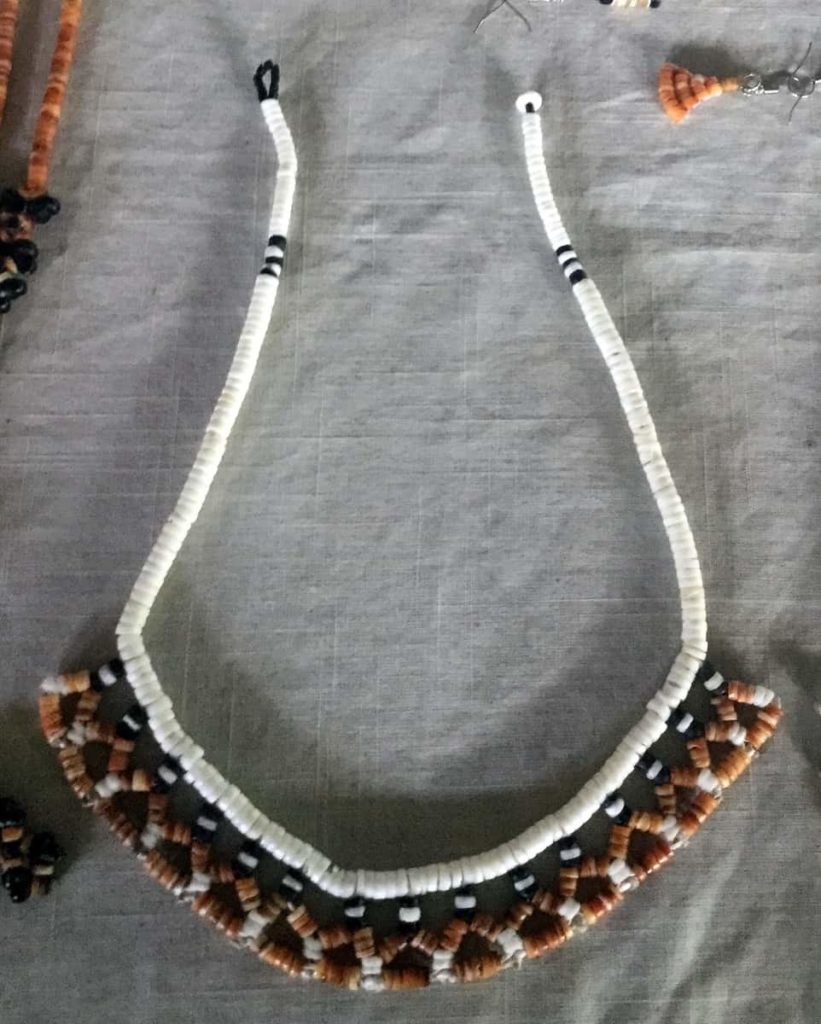
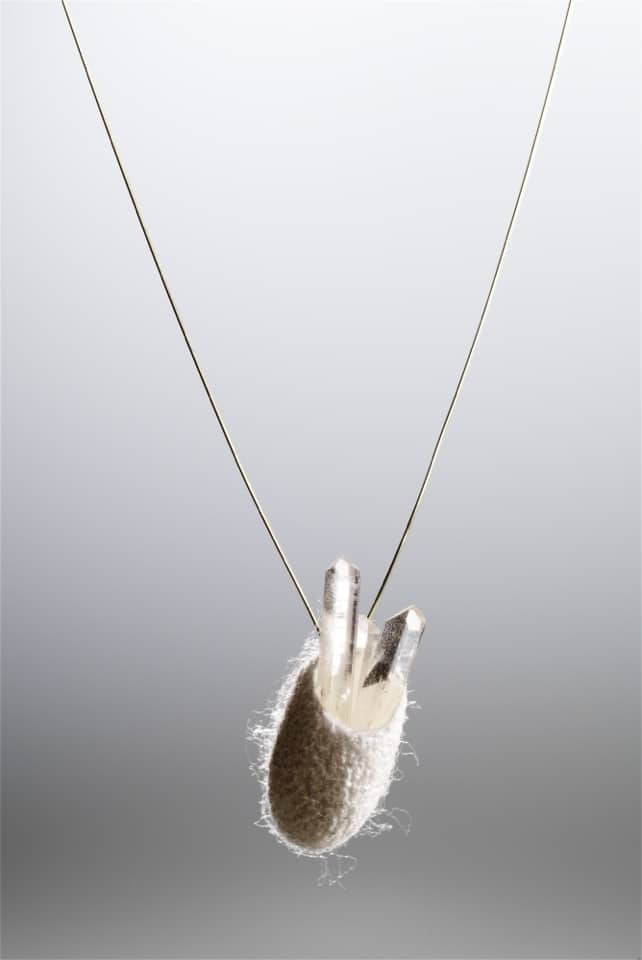
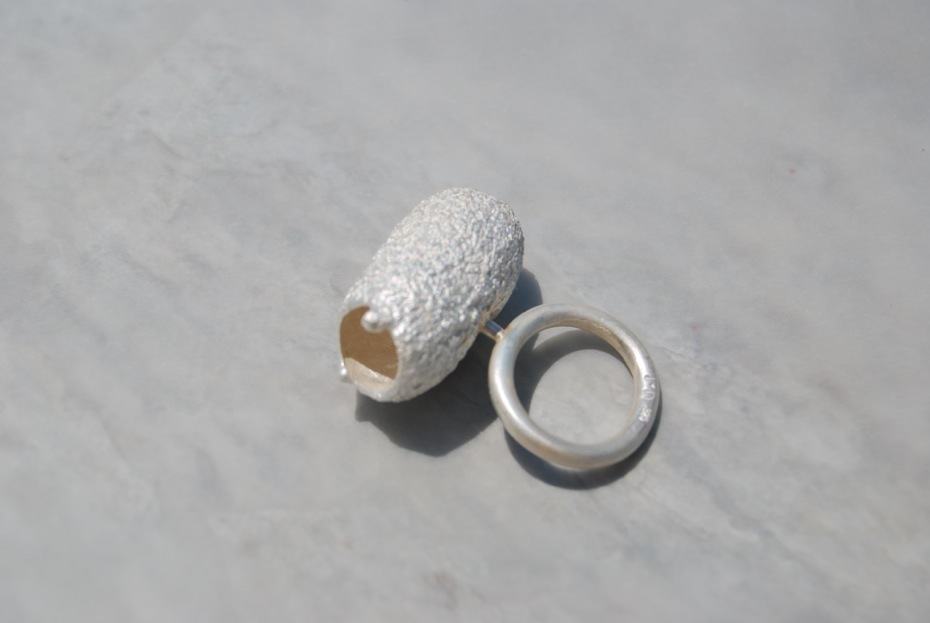

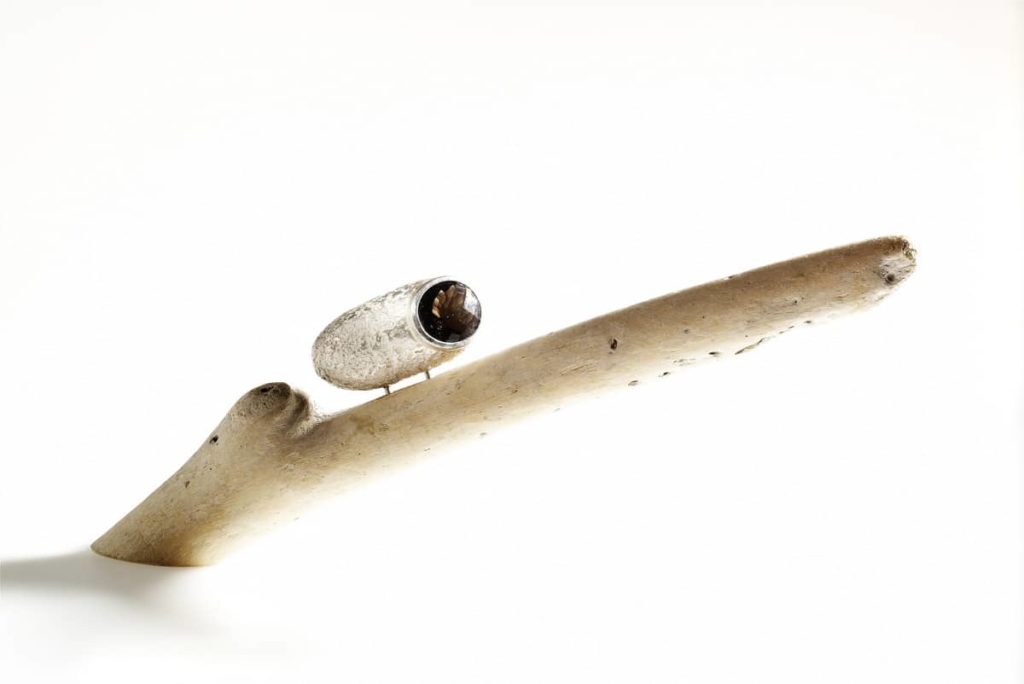
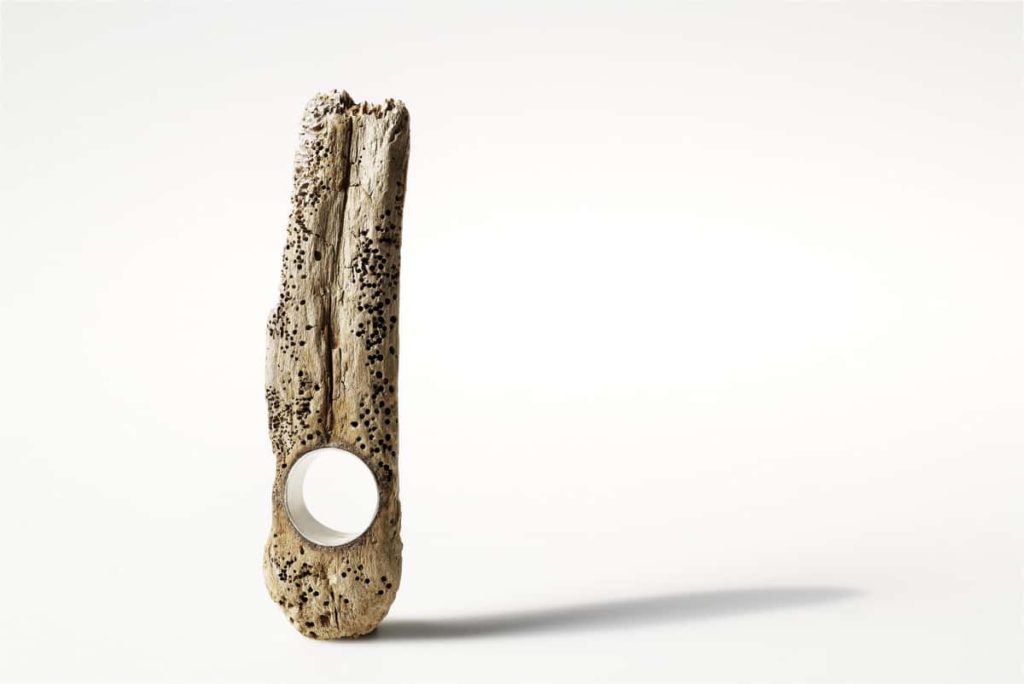
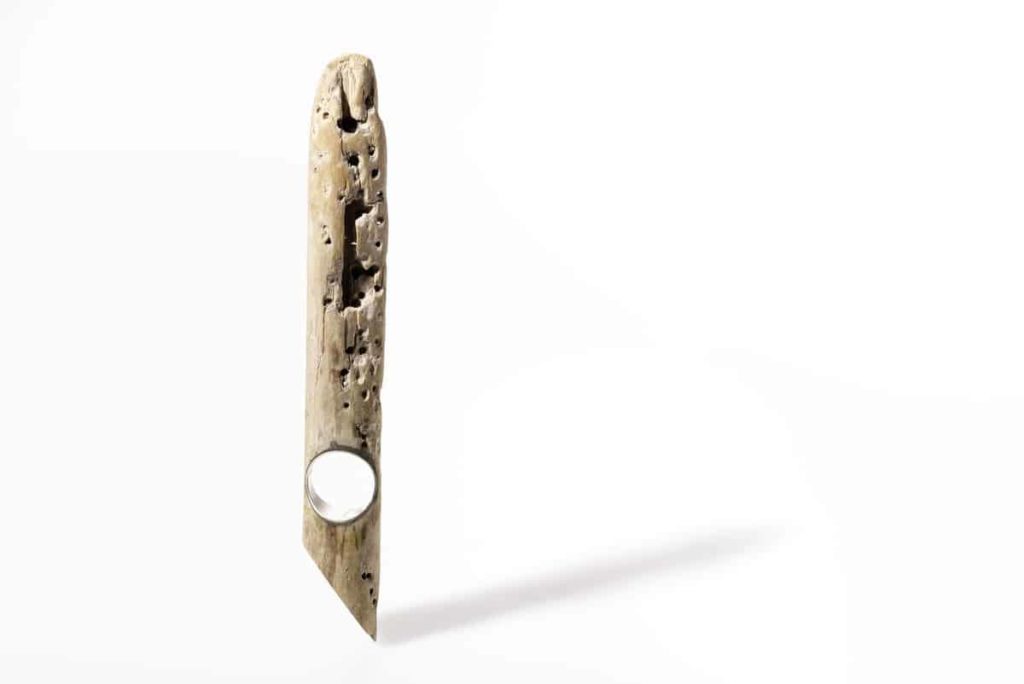
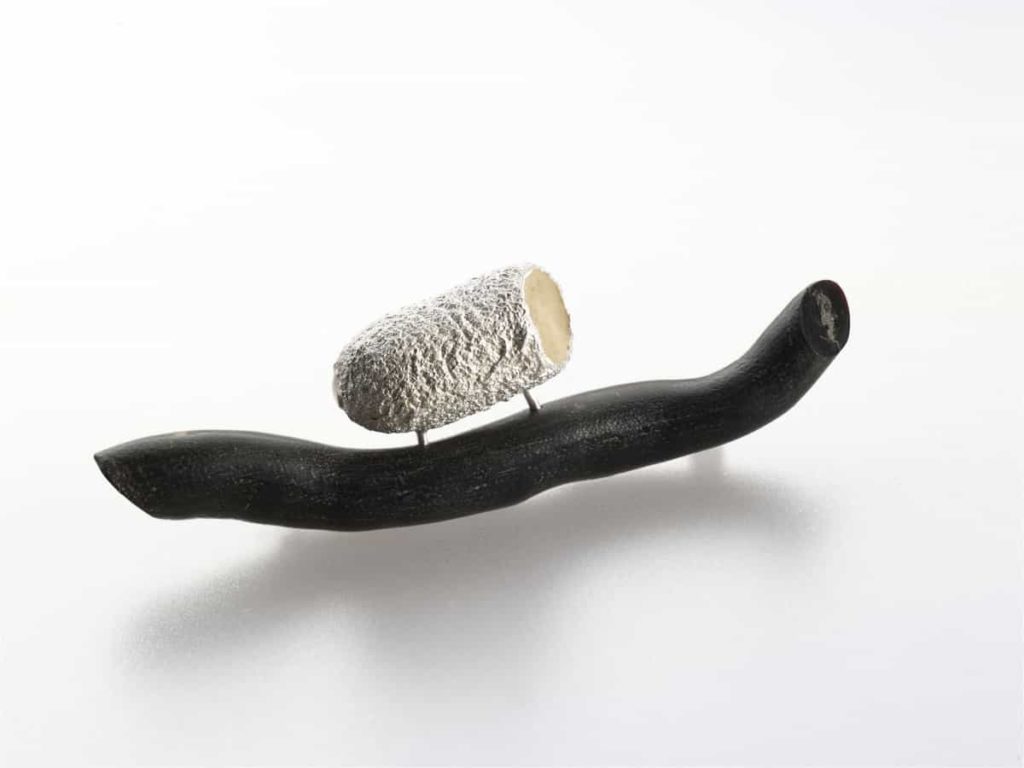
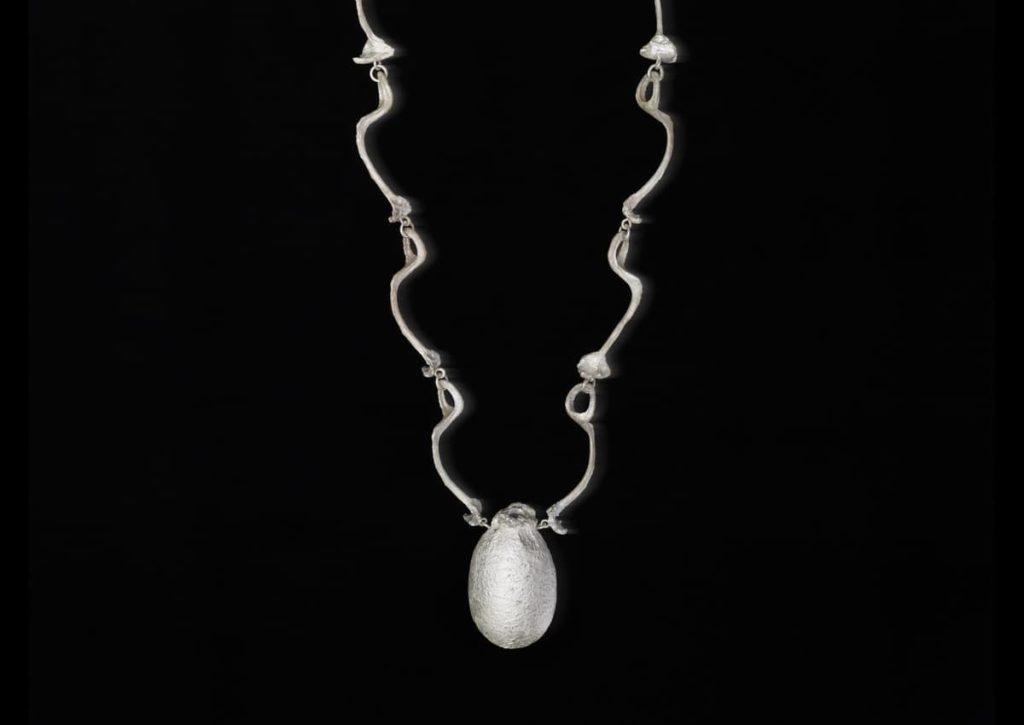

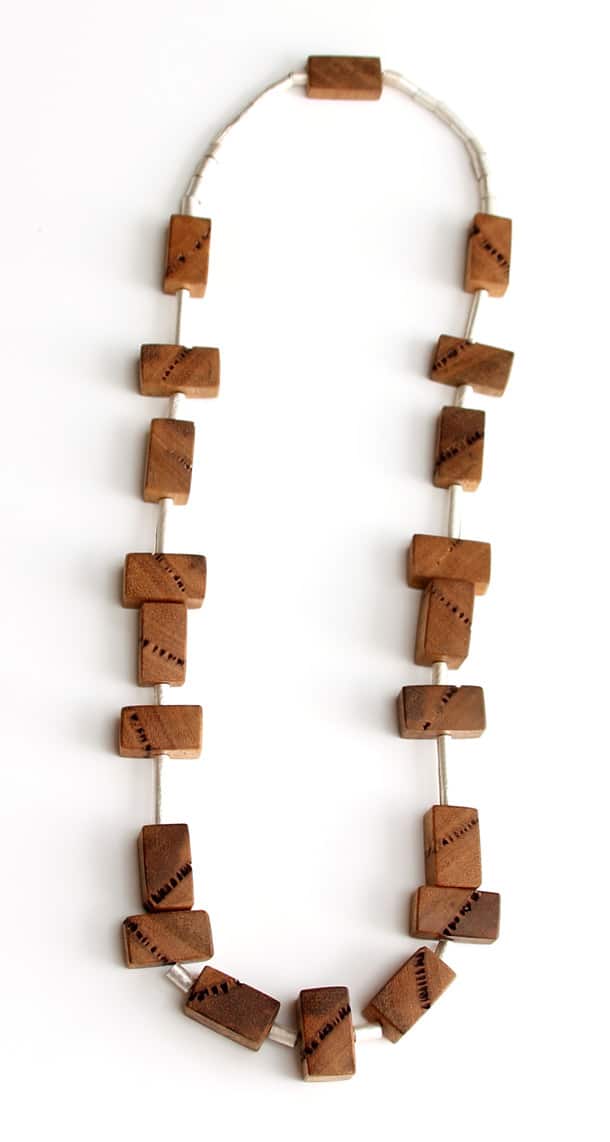
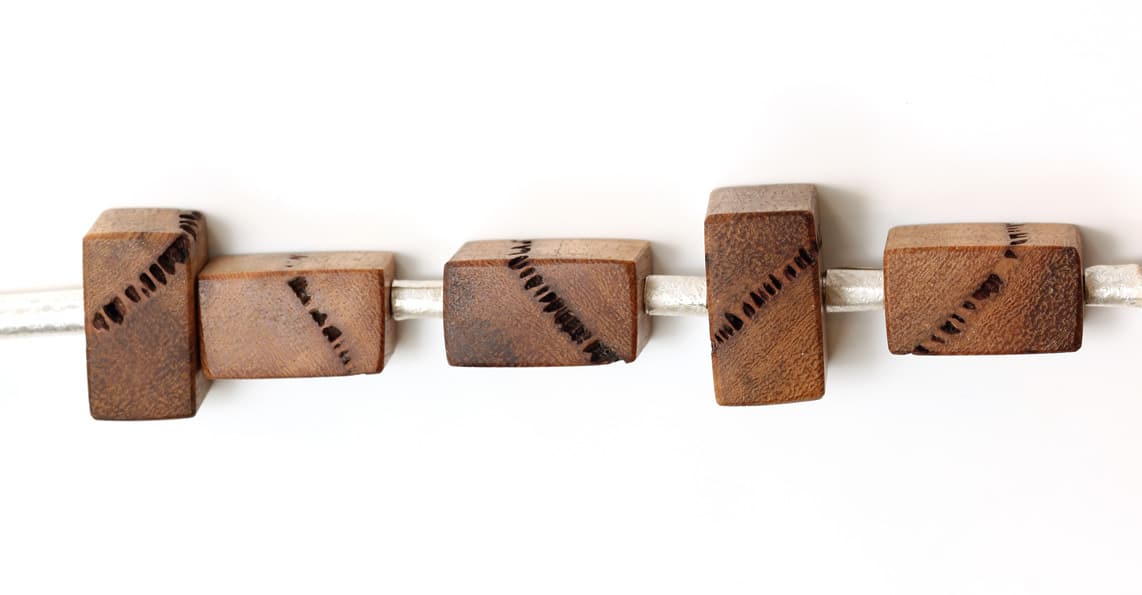



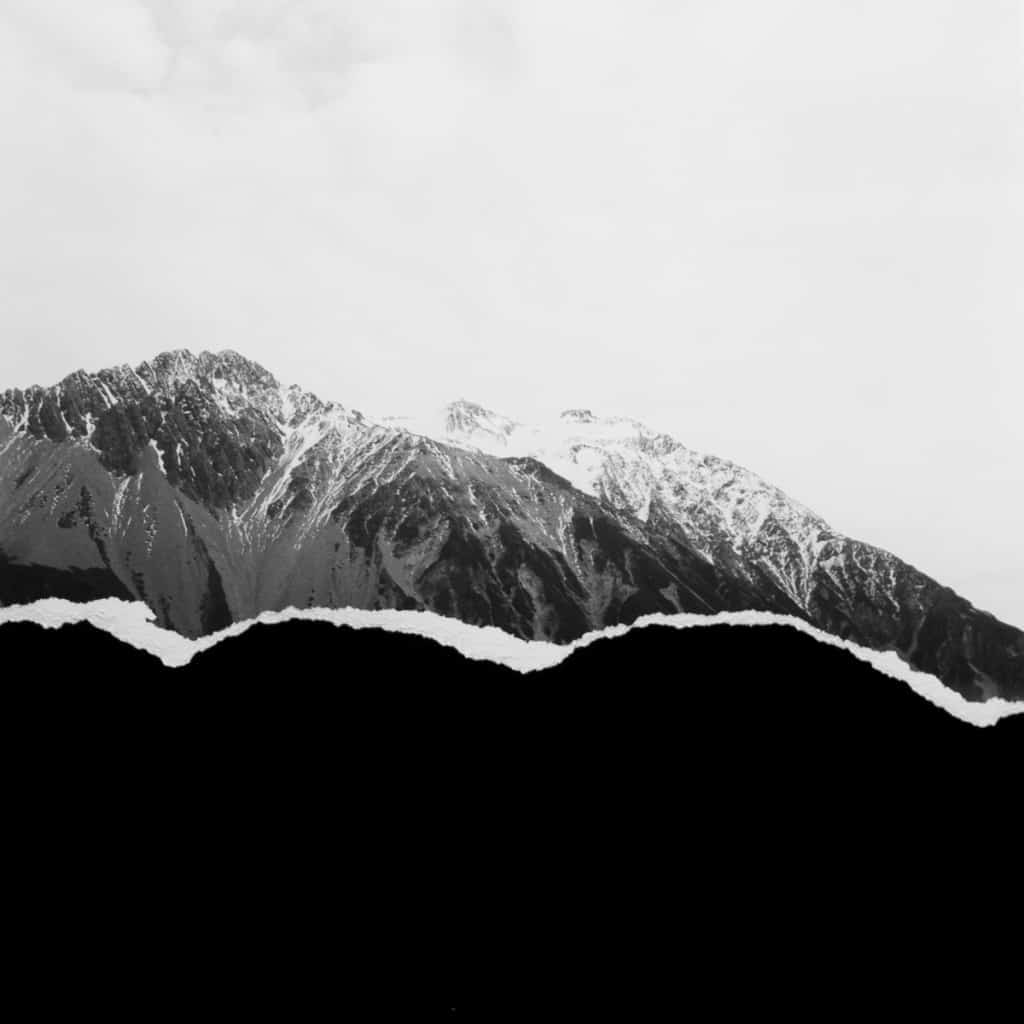
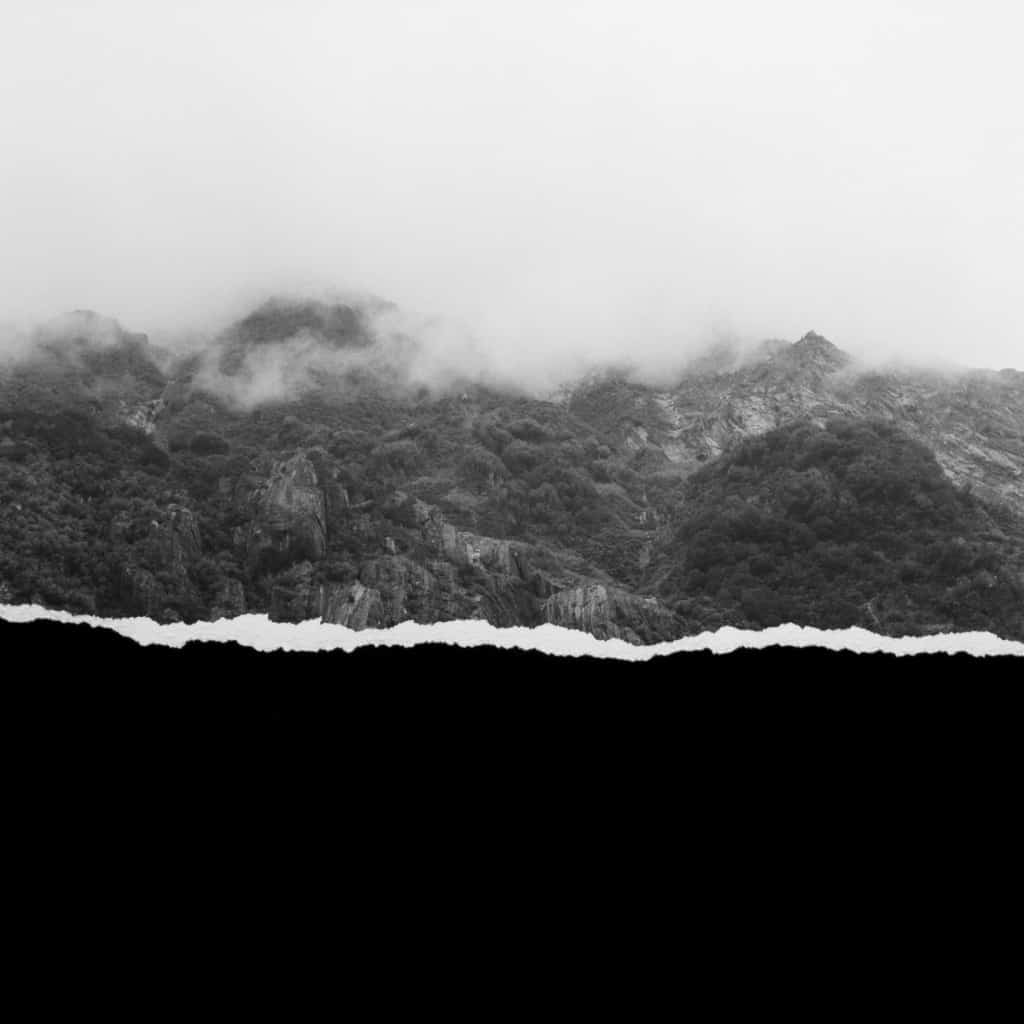
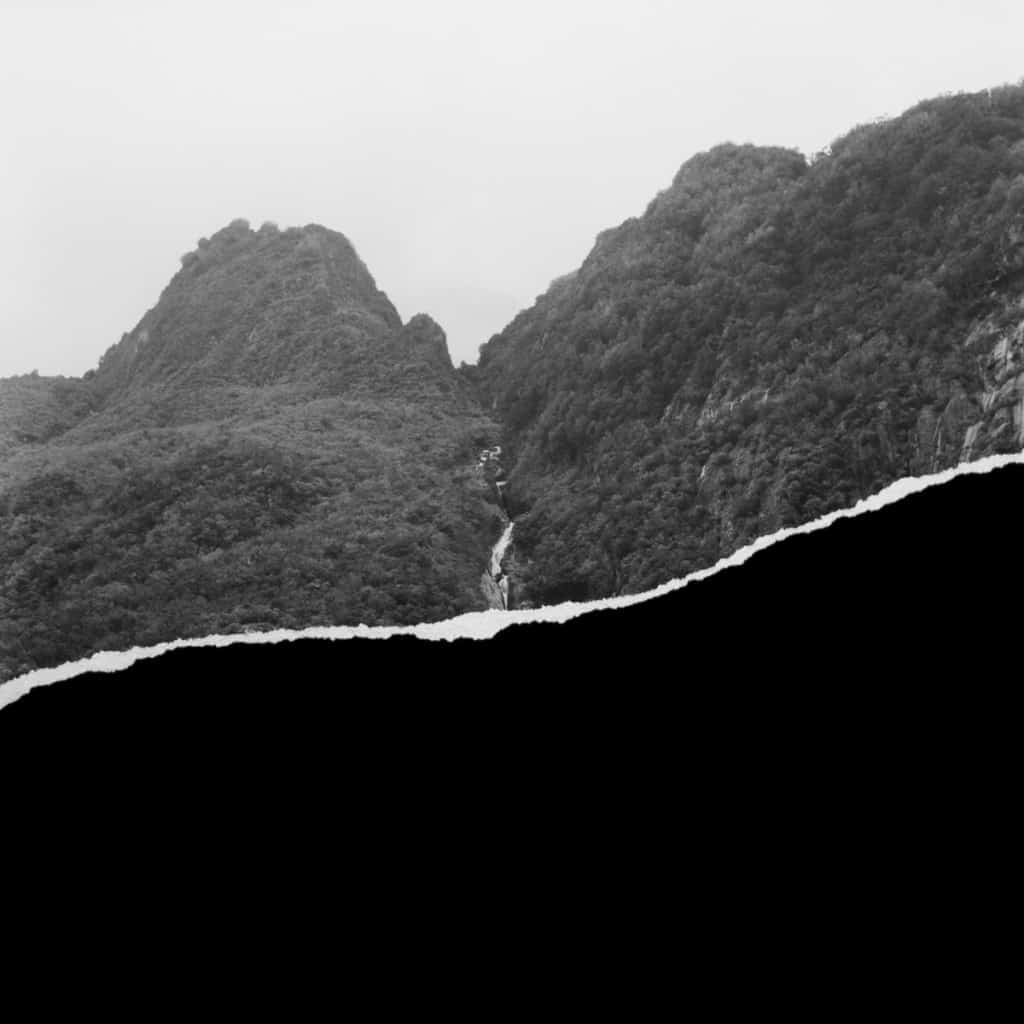
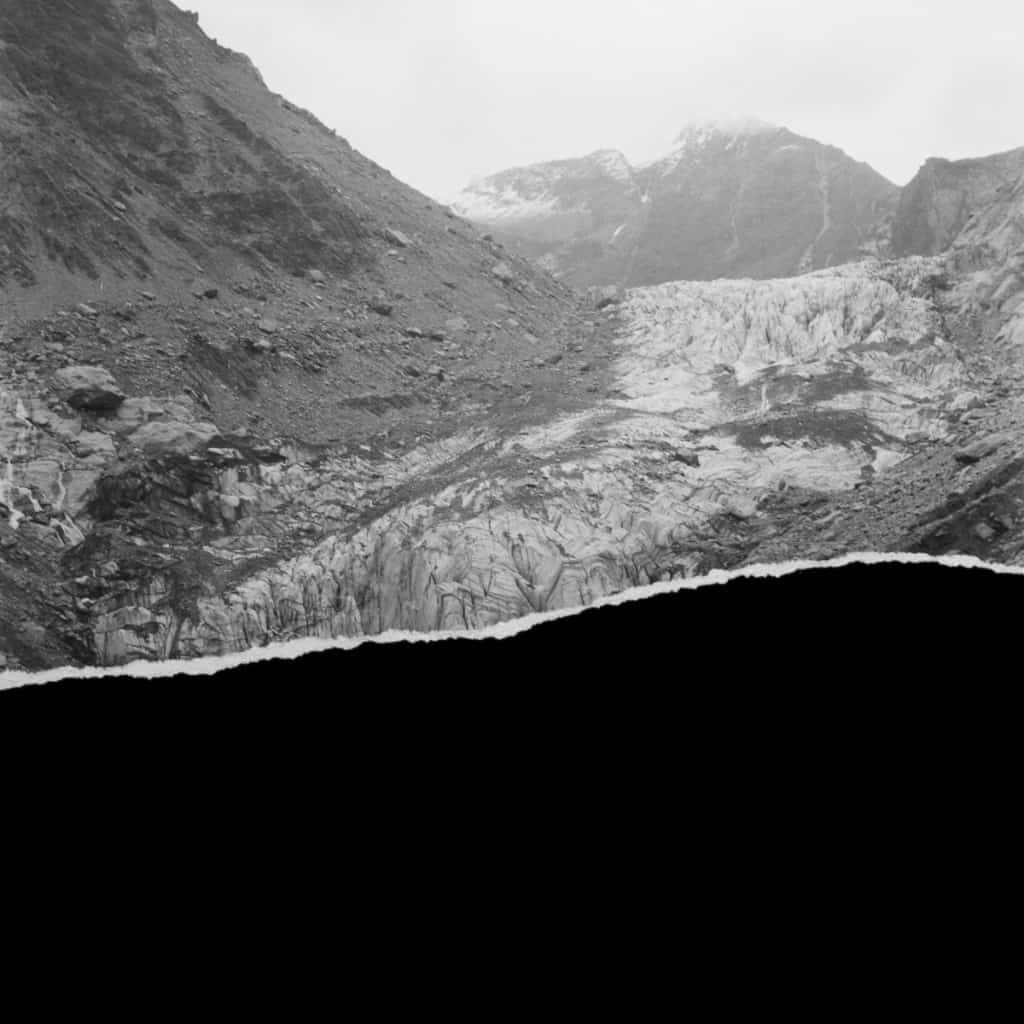
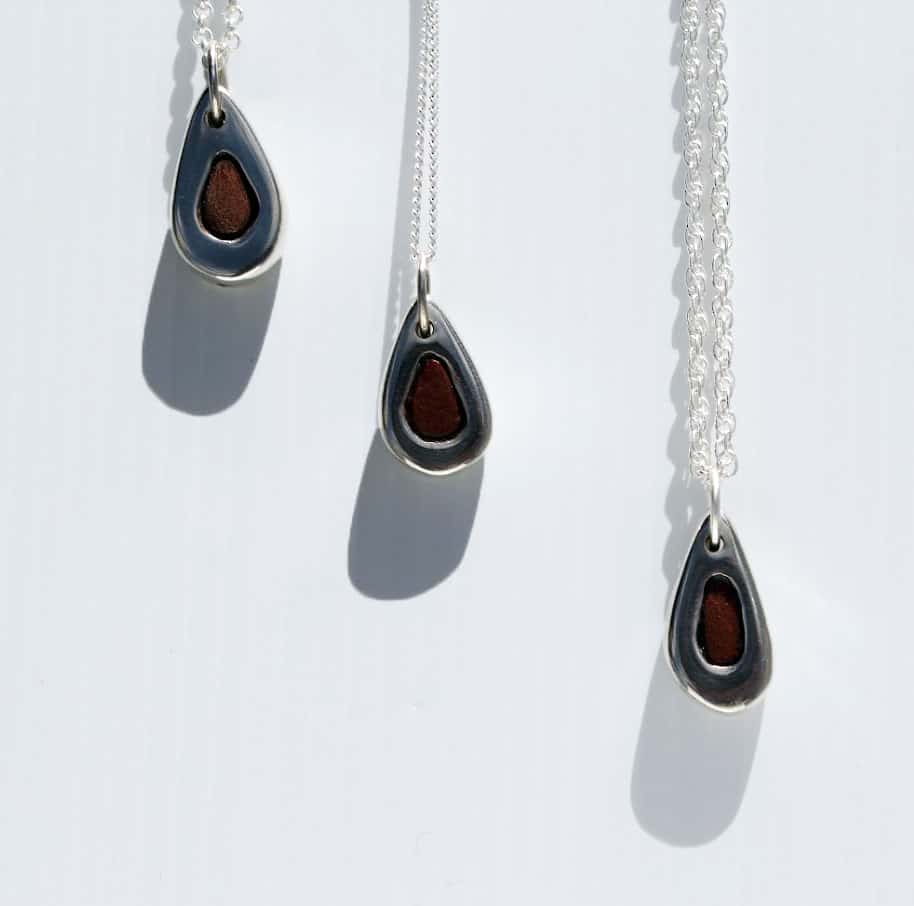

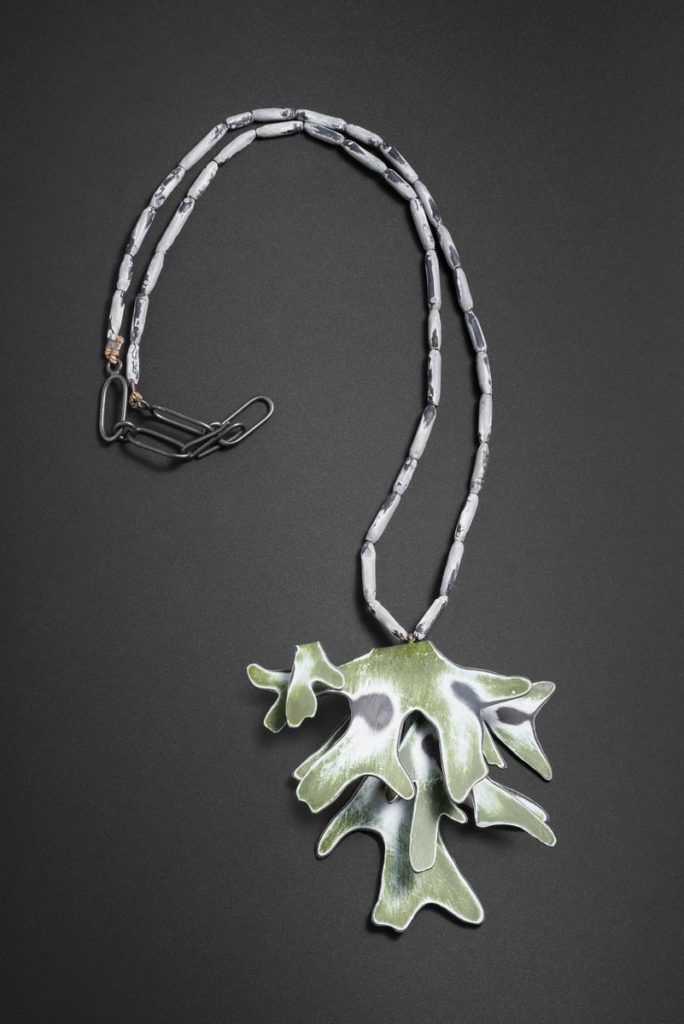
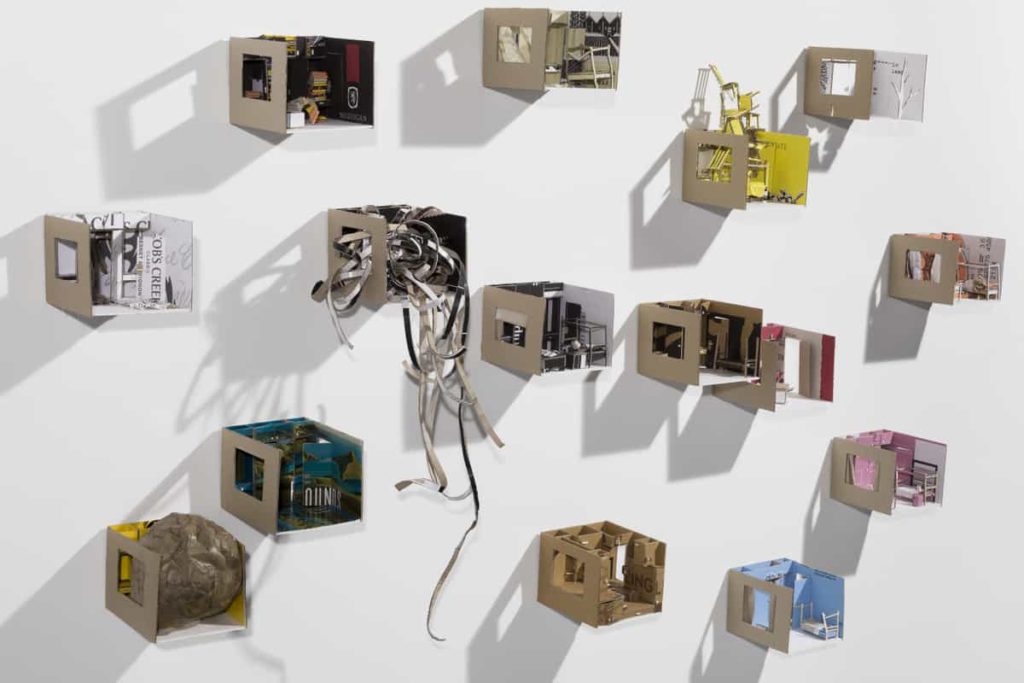
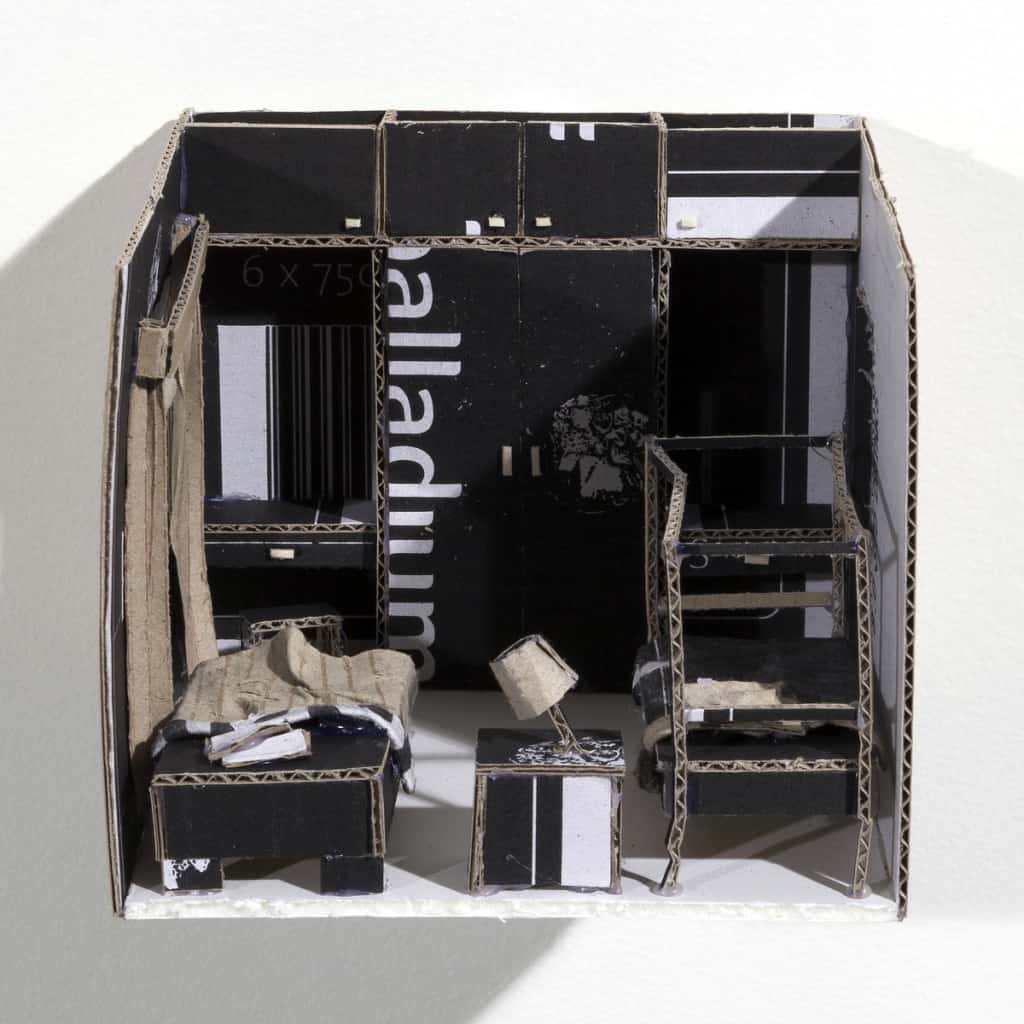

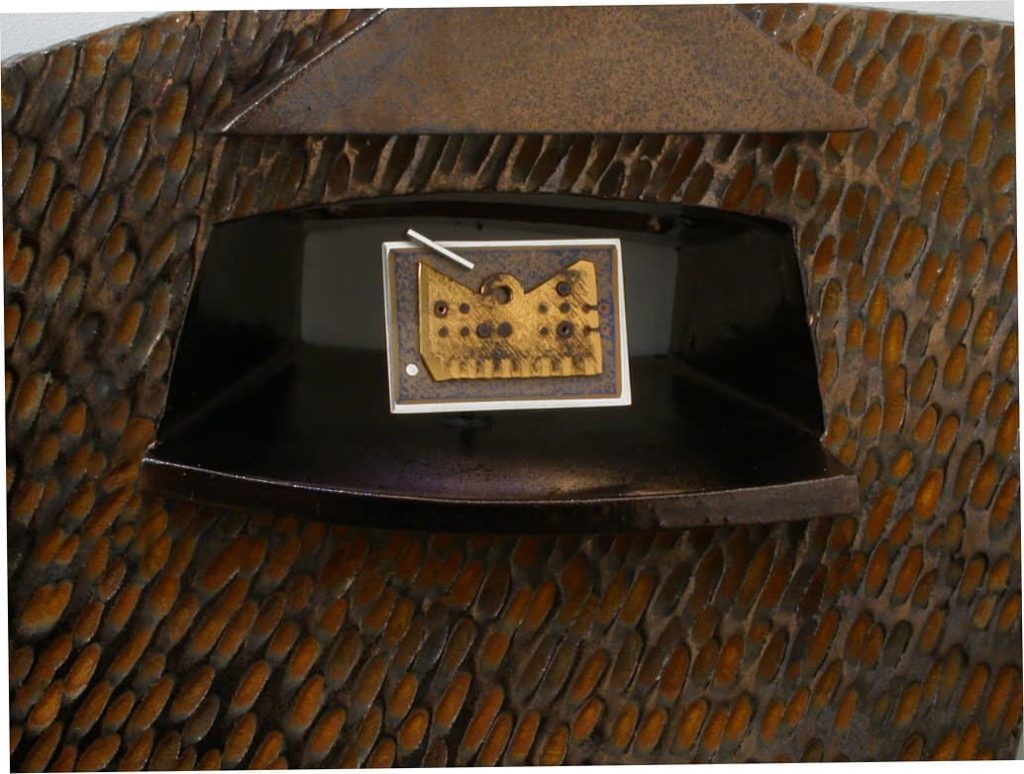


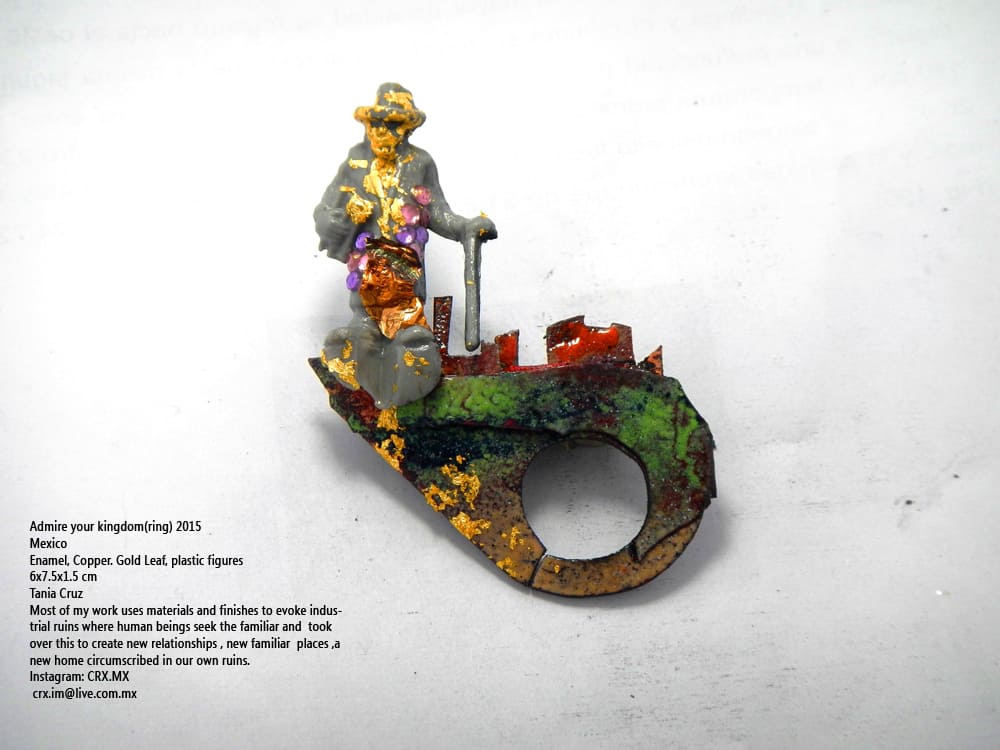
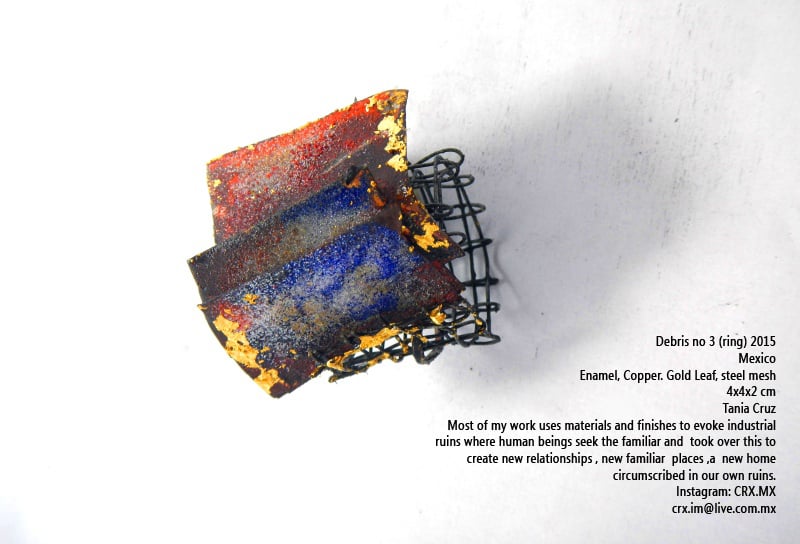

Comments
I am so honored to have my work exhibited along side of so many talented people, however I am totally ‘Chuffed’ that my work is in an exhibition which features work from my Aunty Lola Greeno as well. Two pakans from lutruwita ! (Tasmanian Aboriginals)
Thank you so much for this opportunity.
Andrew ‘kurina’ Gall
Thanks Andrew for sharing your culture and work with Garland.